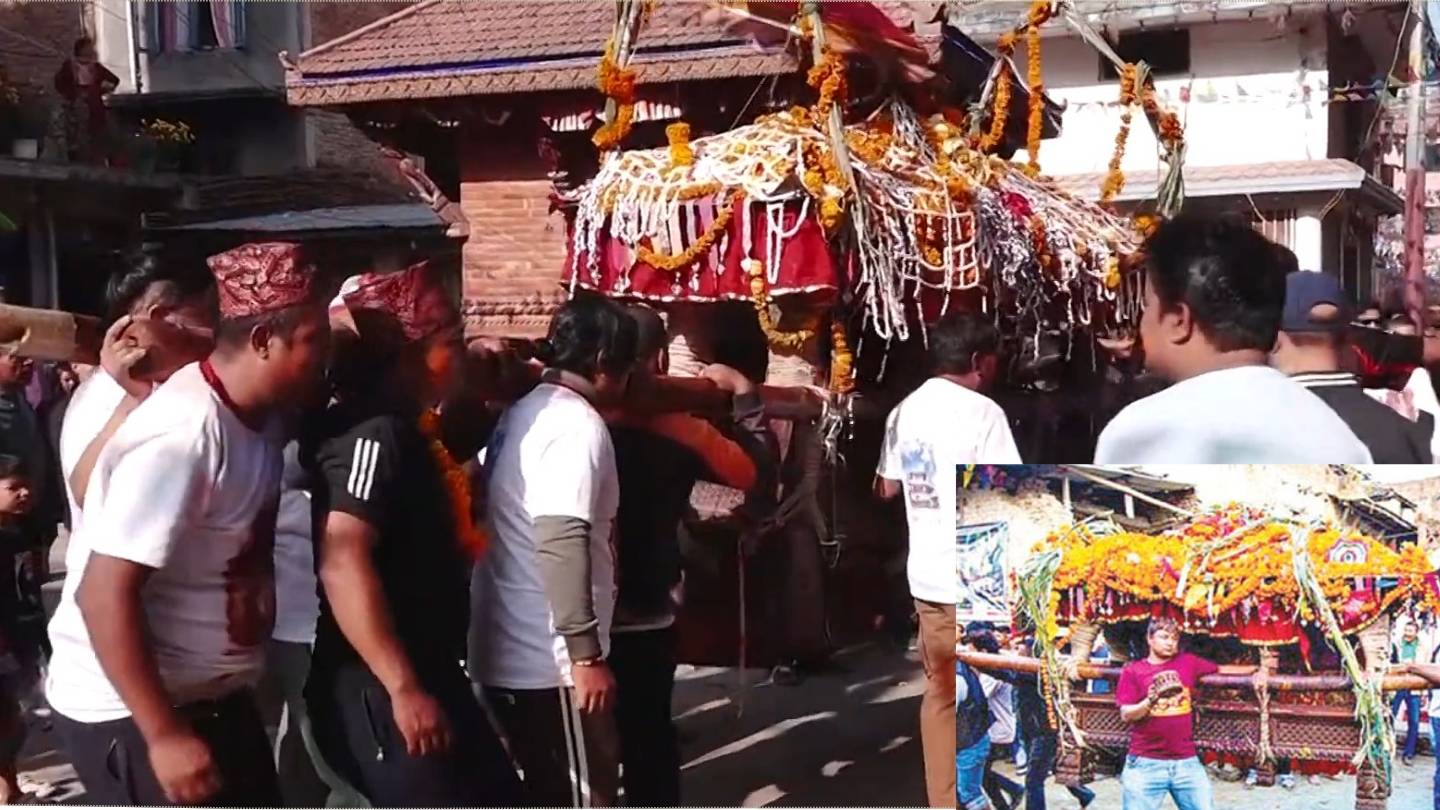
Mahalaxmi Jatra Begins in Balambu, Chandragiri Municipality
The Mahalaxmi Jatra, locally known as ‘Laa Tii Mar,’ has begun on Wednesday in Balambu, located within Chandragiri Municipality. The festival starts on Muh Asthami, the principal day among the 24 Asthami celebrations held throughout the year. On this day, the Newar community of Balambu prepares traditional delicacies such as chhoyala, thakha (meat jelly), and raksi (homemade liquor) as part of the celebration.
This festival is considered the first major jatra (festival) following the start of the New Year 1145 in the Nepal Era (Nhu Dya). In the local language, the Balambu Jatra is called ‘Laa Tii Mar,’ the one held a week later in Thankot is called ‘Sakimar,’ and the one held a month later in Satungal is known as ‘Bakhumar’ (the Seven-Village Jatra). These festivals are organized by two Guthis (traditional religious associations).
According to local resident Binod Shrestha, the Mahalaxmi Jatra of Balambu has many unique traditional aspects. He stated that although most jatras in the valley appear similar, each holds a distinctly different inner meaning. During this festival, it is customary to offer cooked rice with meat broth to the deities. In the local Newar language, ‘Laa’ means meat, ‘Tii’ means broth, and ‘Mar’ means rice.
Priest Shanti Gurju explained that the day of Navami is known as the ‘day of preparation.’ According to her, on Navami, various dishes are prepared to welcome and honor guests. On the same day, different cultural programs are organized to entertain visitors attending the festival. Local youths participate in music and dance performances accompanied by traditional instruments.
Dashami is regarded as the most important day of the festival. Early in the morning, nine Guthi members go to the monastery and perform Kumari Puja (worship of the living goddess) in seclusion. After completing the ritual, the Guthi members proceed to worship Natyeshwar. Then, seven members carry the idol of Kumari to the Natyeshwar Temple. During this time, it is customary for the Guthi members to drink two mana (traditional units) of home-brewed liquor from an earthen bowl (paatla).
Afterward, all nine Guthi members visit the Mahalaxmi Temple to perform the goddess’s worship. The main jatra officially begins when a flower falls from the head of the goddess during the ritual. Immediately after the worship, the idols from the temple are placed on the khat (wooden chariot). Similarly, the idol of Kumari is placed in the dhaki (portable palanquin).
The Kumari is adorned with a garland made from the dried small intestine of the sacrificial buffalo. Then the dhaki is carried on the back, marking the beginning of the khat procession. The chariot of Ganesh is carried first, followed by the chariot of Mahalaxmi. Once the deities are placed on the chariots, an extensive ritual worship is performed. Every household in the community must visit the procession to offer worship.
After the community rituals conclude, a government representative known as Dware performs worship on behalf of the Government of Nepal. Following this, the chariot is danced throughout the day in rhythm with the traditional music. Those who carry and dance with the chariot must do so barefoot.
Published Date: 2082-07-13
Festival

